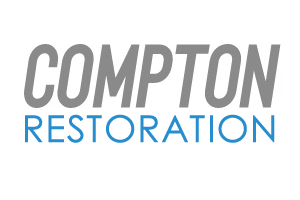Disaster Recovery
Compton Restoration is the one-stop when it comes to any form of Disaster Recovery Services. A family-owned and operated business.
Best Disaster Recovery Services
We are here to help during any disaster.
Our Services
We’ll Help You Fix What Needs Fixing, Build What You Want Built, And Save Money Doing It!
Disaster can strike in the blink of an eye, and the aftermath leaves us reeling with shock and despair. For homeowners, property managers, and insurance professionals, the journey back to normalcy is often long and arduous, filled with complexities, uncertainties, and significant challenges. But within the storm’s aftermath lies devastation and the opportunity for resilience, renewal, and recovery.
Let us help you navigate the intricate landscape of property disaster recovery. We offer a step-by-step plan to help you weather the worst and emerge on the other side, not just restored but potentially stronger than before. We’ll cover everything from immediate response to long-term restoration, from managing insurance claims to mitigating future risks. Whether facing the immediate aftermath of a flood, fire, or another property-damaging phenomenon or looking to prepare for any potential disaster, this guide aims to be your beacon and your scaffold.
The key to resilience is preparation. Waiting until disaster hits is not a strategy; it’s a gamble. The first step in effective property disaster management is to prepare for potential risks.
Assessing Your Risks
Every home and property is subject to different hazards, from geographical vulnerabilities to structural risks. Start by conducting a thorough risk assessment and identify potential disaster scenarios that could affect your property.
Developing an Emergency Plan
Having a robust emergency plan can make all the difference when time is of the essence. This plan should include evacuation routes, emergency contacts, crucial documents to have on hand, and a designated meeting point for family members or employees.
Assembling an Emergency Kit
Gathering supplies beforehand ensures that you’re equipped to face immediate post-disaster challenges. Your kit should include essentials such as water, non-perishable food, a first-aid kit, flashlights, batteries, and any necessary medications.
Communicating Your Plan
It’s not enough to have a plan—you must ensure that everyone living in or associated with the property is aware of it. Regular drills and open communication about safety protocols are vital.
When disaster strikes, the first 24 hours are critical. Immediate response actions can minimize damage and expedite the recovery process.
Ensuring Safety
Once it’s safe to do so, assess your property for safety hazards. Be on the lookout for structural damage, electrical issues, and any other potential dangers.
Documenting the Damage
Take photographs and videos of the damage for insurance purposes. Note any valuables or irreplaceable items affected.
Notifying the Authorities
Contact emergency services to report the disaster. This is especially important if the event poses a threat to the community or the environment.
Starting the Cleanup Process
Begin the cleanup process to prevent further damage. Remember not to throw anything away until your insurance company has documented the damage.
After safety and cleanup, your next priority is to navigate the insurance process. Understanding the claims process and your policy is crucial to getting the coverage you’re entitled to.
Reviewing Your Policy
Familiarize yourself with the details of your insurance policy. Be aware of the type of coverage you have and any exclusions that may apply.
Documenting Losses
Keep thorough records of all damaged or lost items. These will serve as evidence for your claim.
Filing Your Claim
It’s important to file your insurance claim as soon as possible. Delaying can complicate the process and may even result in the denial of your claim.
Working with Adjusters
When the insurance adjuster arrives, be prepared to show them your documentation and provide any additional information they request. Be sure to get a copy of their report for your records.
Rebuilding is often the most extensive phase of the recovery process. It requires time, patience, and often the expertise of various professionals.
Finding the Right Contractors
Quality contractors are instrumental in the restoration process. Take the time to find reputable professionals who understand your needs and the urgency of the situation.
Planning for Renovations
Work with your contractor to create a detailed plan for renovations. This may involve multiple phases, especially if the damage is extensive.
Securing Funding
If insurance coverage is insufficient, look into additional funding options such as loans, grants, or crowdfunding platforms.
Overseeing the Project
While your contractor will manage the day-to-day work, staying involved and informed throughout the process is important. Regular check-ins and open communication can help ensure the project stays on track.
Once your property is restored, your recovery journey is not over. There are several critical steps to transitioning back to a normal life.
Rebuilding Your Routine
Re-establishing a sense of normalcy is key to the psychological recovery process. Focus on returning to your daily routine as much as possible.
Addressing Emotional and Psychological Needs
Property damage often comes with considerable stress and emotional toll. Seek out support services if needed, and be gentle with yourself as you navigate the emotional recovery process.
Reinforcing Against Future Disasters
Learn from the experience and take steps to protect your property against future disasters. This may involve fortifying structures, installing safety devices, or adjusting your insurance coverage.
Community Engagement and Advocacy
Share your experience with your community and get involved with disaster preparedness initiatives. Your insight can be invaluable to others facing similar challenges.
After going through a disaster, preparing for the next one might be the last thing on your mind. However, proactive measures taken now can save you a world of trouble in the future.
Revisiting Your Emergency Plan
As you recover and your property changes, your emergency plan may need adjustments. Take the time to revisit and update it regularly.
Continual Home Maintenance
Regular maintenance helps ensure that your property is in the best condition to withstand future disasters. Stay on top of seasonal checks and necessary repairs.
Investing in Preventative Measures
Consider investing in measures that can minimize the impact of future disasters, such as flood barriers, fire-resistant materials, or seismic retrofitting.
Staying Informed and Prepared
Keep an eye on weather patterns and other potential risk factors. Stay informed and be prepared to act quickly should another disaster threaten.
Disasters can be earth-shattering, but they can also reveal the indomitable spirit of human resilience. By following the steps outlined in this guide, you equip yourself with the tools to not just recover from one disaster but to face any future ones with fortitude and foresight. Remember, the story does not end with the storm—it is a testament to our ability to rebuild, renew, and thrive against all odds.
Compton Builders Services
Commercial & Residential Louisiana Construction Services
- Design & Build
- Remodeling
- Siding
- Wall Insulation
- Decking
- Flooring
- Metal Buildings
- Special Projects
- Shingle Roofs
- Metal Roofs
- Built-Up Roof Systems
- Tile Roofs
- Flat Roof Specialists
- Coating
- Roof Repair







